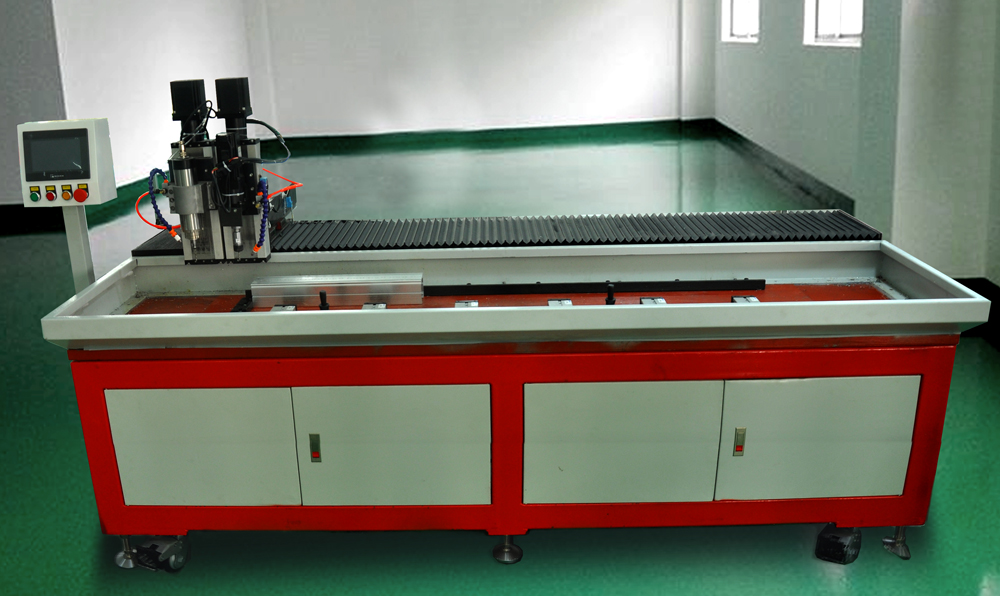Diagnosis method of cnc machine ball screw common fault
As an important part of the precision engraving machine, the screw rod will fail. Do you know? How do we solve these problems?
The ball screw of the CNC engraving machine is composed of a screw, a nut and a ball. It converts the rotary motion into a linear motion, or converts the linear motion into an ideal transmission element for a rotary motion! Due to the small frictional resistance, ball screws are commonly used in various industrial equipment and precision instruments. However, there are still some problems encountered in use. Failure to deal with them will cause malfunctions, which will affect the precision of the engraving machine and even cause the machine to stop working. Then, Hao Dabian told everyone about some of the common fault diagnosis methods of screw and what to pay attention to when using it.

First, common faults and corresponding diagnostic exclusion methods are described below.
1. Failure caused by improper control of preload when adjusting axial clearance
The double nut type ball screw nut can basically eliminate the axial clearance after being adjusted by the preload. However, the size of the pre-tightening force should be controlled at this time. If the pre-tightening force is too small, the axial clearance cannot be completely eliminated and the pre-tightening effect will not be achieved; if the pre-tightening force is too large, the no-load moment will increase, thereby reducing the transmission efficiency and causing the drive motor to generate heat and overloading. Call the police. The way to eliminate such failures is to readjust the pre-tightening force as required so that it can eliminate the gap and make the pre-tightening force too little.
2, due to ball screw failure caused by self-locking
The ball screw nut has a low coefficient of friction and high transmission efficiency, but it cannot be self-locking. Therefore, when the ball screw nut is used for high-speed large-scale inertia transmission of vertical transmission or horizontal placement, the headstock is prevented from slipping or overshooting due to sudden power failure. Braking devices must be considered in the transmission chain. Otherwise, abnormal faults may occur due to the inertial movement of the moving parts due to their own weight. Severe damage to machine tool components may occur. Common braking methods include the use of overrunning clutches, electromagnetic friction clutches, or the use of servo-driven motors with braking devices.
3, ball screw nut noise in the transmission process
The ball screw nut is a high-precision transmission element. The main cause of noise in the work is that there is a certain defect in the process of assembly and adjustment, or the daily inspection and maintenance are not in place. If the fasteners loosen, the bearing glands are not in place, and the bearing or the feed screw nut is damaged and poorly lubricated. In order to reduce the occurrence of such failures, it is usually necessary to strengthen the daily inspection and maintenance of the feed transmission chain, and timely tighten the loose parts. Through the inspection of the processed parts, the feed chain is adjusted in time to check whether the lubrication system is smooth.
Second, the ball screw screw is a precision component, should pay attention to the following points when using.
(1) Before use, check the lubrication condition. If the lubrication is not good, the function of the ball screw will be lost in the short term.
(2) When using grease, please use it directly. However, during use, if there is dust or dust on the surface of the grease, clean it with clean white kerosene, and then reapply it with a new grease that is the same as the original grease. Mixing of different types of grease should be avoided.
(3) The inspection as a lubricant is to be put into use for 2 to 3 months. When it is found that the dirt is more noticeable, it is recommended that the old lubricant on the product be wiped clean and re-applied with a new lubricant. After that, the grease inspection cycle and the lubricant replacement cycle are regularly performed. Generally, it is 1 year. However, set the appropriate interval according to the environment.